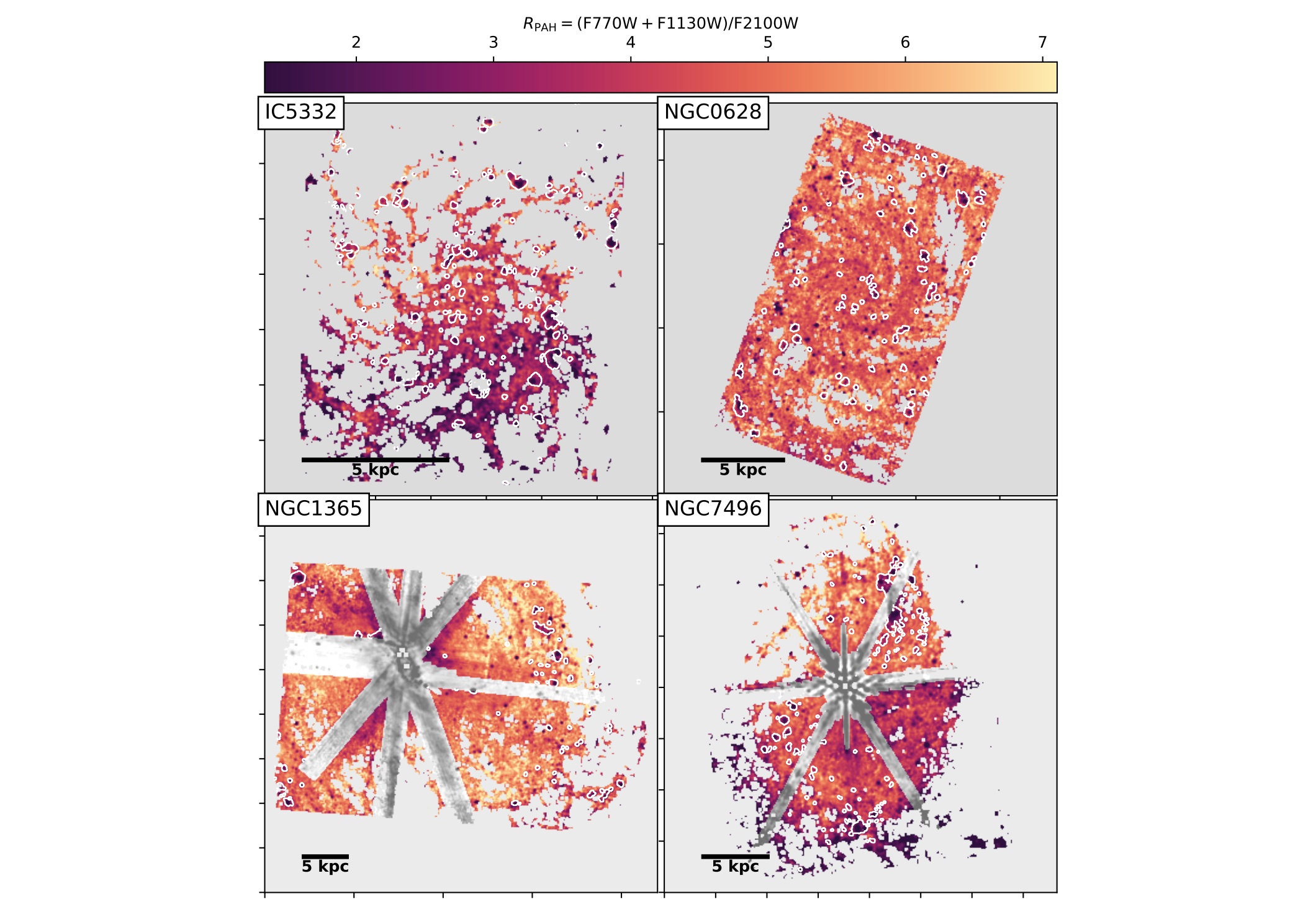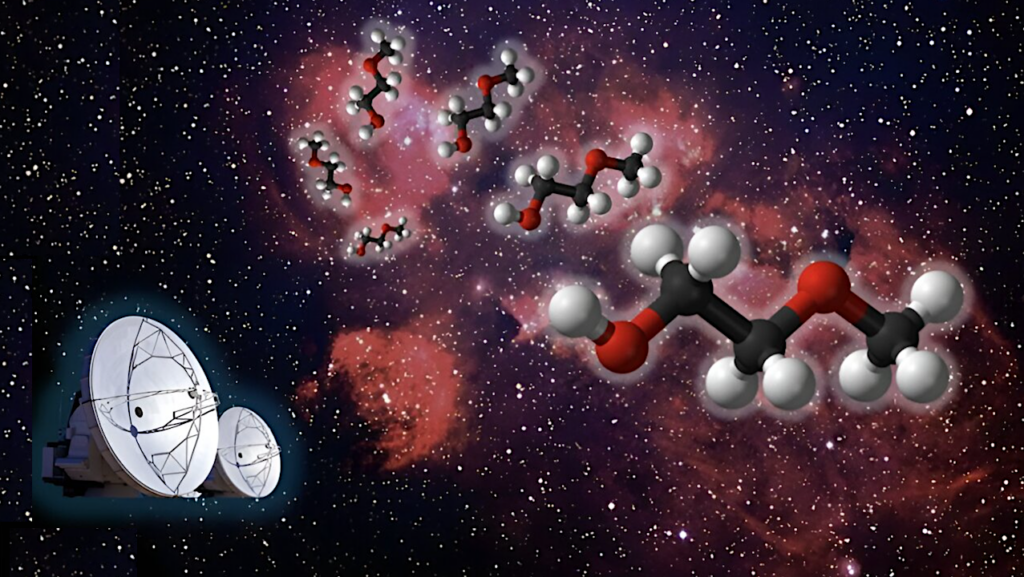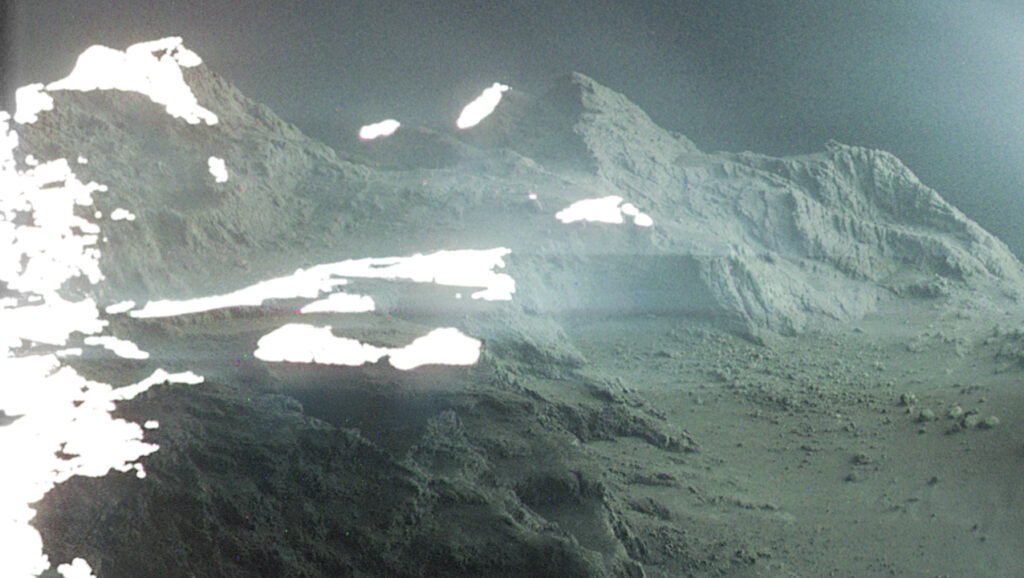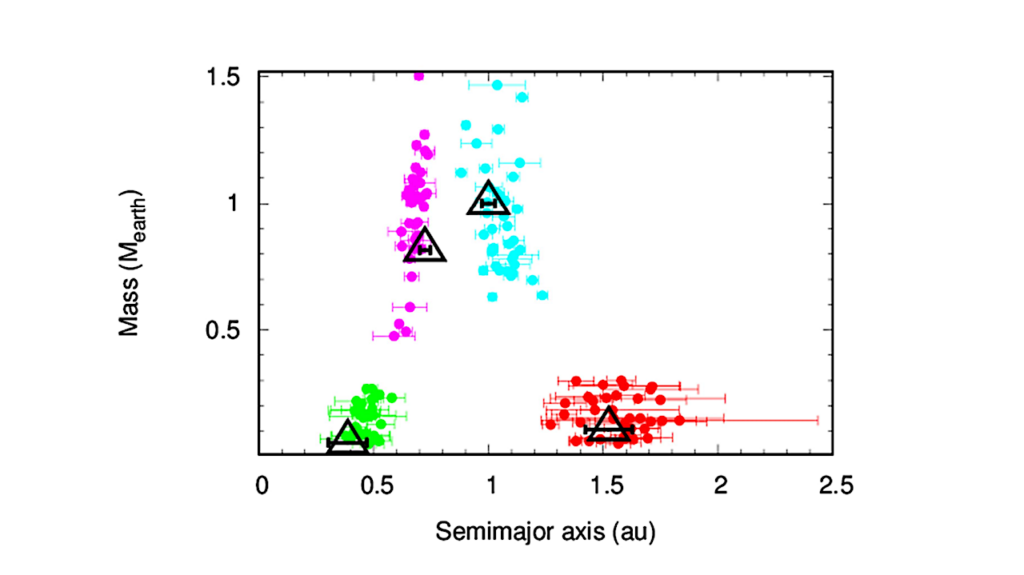PHANGS-JWST First Results: Variations in PAH Fraction as a Function of ISM Phase and Metallicity

We present maps tracing the fraction of dust in the form of polycyclic aromatic hydrocarbons (PAHs) in IC 5332, NGC 628, NGC 1365, and NGC 7496 from JWST/MIRI observations.
We trace the PAH fraction by combining the F770W (7.7 μm) and F1130W (11.3 μm) filters to track ionized and neutral PAH emission, respectively, and comparing the PAH emission to F2100W which traces small, hot dust grains. We find average RPAH=(F770W+F1130W)/F2100W values of 3.3, 4.7, 5.1, and 3.6 in IC 5332, NGC 628, NGC 1365, and NGC 7496, respectively. We find that H II regions traced by MUSE Hα show a systematically low PAH fraction.
The PAH fraction remains relatively constant across other galactic environments, with slight variations. We use CO + H I + Hα to trace the interstellar gas phase and find that the PAH fraction decreases above a value of IHα/ΣH I+H2 ∼ 1037.5 erg s−1 kpc−2 (M⊙ pc−2)−1, in all four galaxies. Radial profiles also show a decreasing PAH fraction with increasing radius, correlated with lower metallicity, in line with previous results showing a strong metallicity dependence to the PAH fraction. Our results suggest that the process of PAH destruction in ionized gas operates similarly across the four targets.
Jérémy Chastenet, Jessica Sutter, Karin Sandstrom, Francesco Belfiore, Oleg V. Egorov, Kirsten L. Larson, Adam K. Leroy, Daizhong Liu, Erik Rosolowsky, David A. Thilker, Elizabeth J. Watkins, Thomas G. Williams, Ashley T. Barnes, Frank Bigiel, Médéric Boquien, Mélanie Chevance, I-Da Chiang, Daniel A. Dale, J. M. Diederik Kruijssen, Eric Emsellem, Kathryn Grasha, Brent Groves, Hamid Hassani, Annie Hughes, Kathryn Kreckel, Sharon E. Meidt, Ryan J. Rickards Vaught, Amy Sardone, Eva Schinnerer
Comments: 13 pages, 4 figures. Accepted as part of a PHANGS-JWST Focus Issue to appear in ApJ
Subjects: Astrophysics of Galaxies (astro-ph.GA)
Cite as: arXiv:2301.00578 [astro-ph.GA] (or arXiv:2301.00578v1 [astro-ph.GA] for this version)
Submission history
From: Jérémy Chastenet
[v1] Mon, 2 Jan 2023 09:40:56 UTC (1,048 KB)
https://arxiv.org/abs/2301.00578
Astrobiology, Astrochemistry








